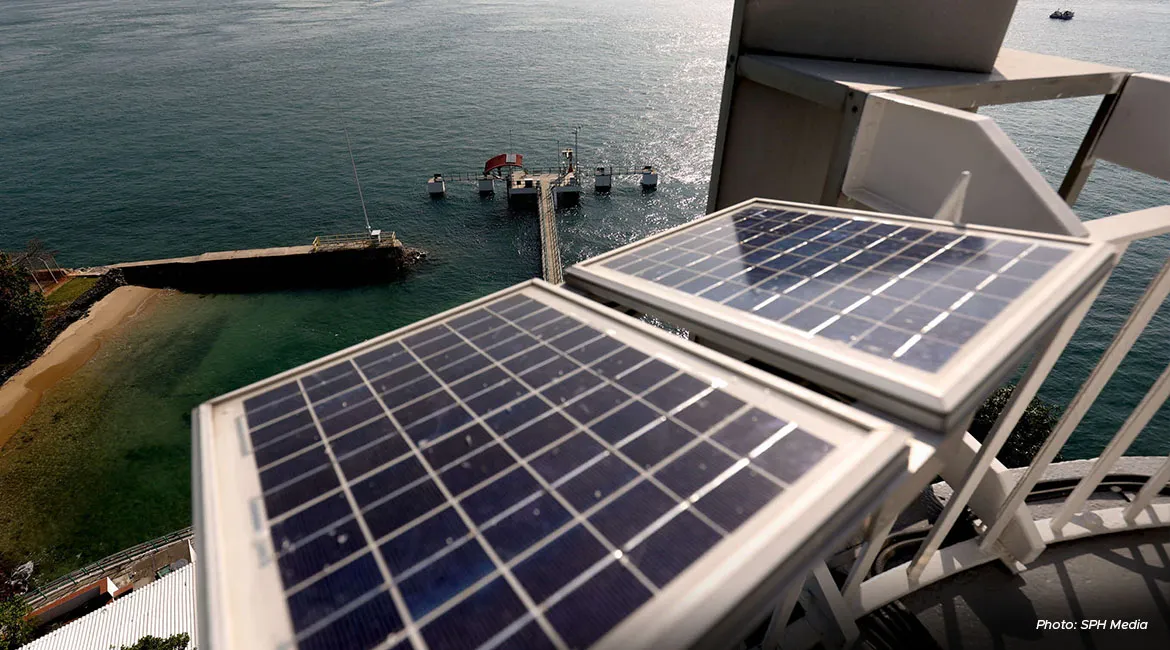Dr Thomas Reindl, deputy CEO at the Solar Energy Research Institute of Singapore (SERIS) at the National University of Singapore (NUS), said that Pulau Satumu is a suitable testbed for emerging marine technologies as it is located away from major shipping routes, and can tap on renewable energy from the Raffles lighthouses.
In addition to solar power and tidal energy, Dr Reindl said that the sea breeze at the Southern Islands could produce wind power, which in small amounts, could serve as a source of electricity to the Raffles Lighthouse. In larger amounts, it could be economically feasible to be transmitted as electricity via submarine cables to industrial islands such as Pulau Bukom or Jurong Island.
Another option is to use it as a vessel charging point, with vessels serving as a mobile storage system.
Marine structure or coral reef impact experts: safe distancing must be maintained
Pulau Satumu's coastline is surrounded by shorelines, said Associate Professor Huang Danwei, Deputy Head of Lee Kong Chian Natural History Museum at NUS. According to their research, the island has one of the richest and most diverse coral reefs in Singapore, including Acropora corals, which are rare in other coral reef locations.
Prof Huang said that compared to the coral reefs in Southeast Asia and Northeast Asia, coral coverage at Pulau Satumu is also much higher than average.
He noted that structures on the sea surface could reduce light and affect coral reef health and biodiversity and that nearby facilities could cause noise pollution or damage to corals and other organisms. He added that the environmental assessment should pay special attention to farm locations to ensure safe distancing from natural coral reef habitats.
Dr Reindl said that many marine energy systems, including floating solar powers, are flexible enough to adapt to the adverse environmental impacts identified.
Source: Lianhe Zaobao © SPH Media Limited. Permission required for reproduction.
Note: EDB sought permission from Lianhe Zaobao to independently produce an English translation of "我国将探讨沙都姆岛海上再生能源发展 预计第四季开展", which was published 8 August 2024.









